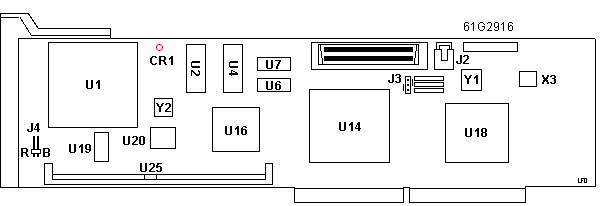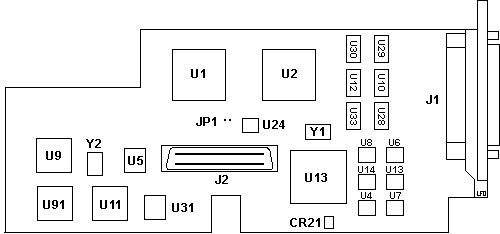|
@8FEC.ADF IBM ARTIC960 Co-Processor Platform Adapter
C8FEC.ADF Init file for @8FEC.ADF
9mc105.exe ARTIC960 Startup/Option Diskette V1.05
r9mc105.txt ARTIC960 Startup/Option Diskette V1.05 README
193-258 IBM ARTIC960 CO-PROCESSOR PLATFORM
ZG93-0336 IBM ARTIC960 CO-PROCESSOR PLATFORM (HTML)
194-239 IBM ARTIC960 Coprocessor for IBM RISC System/6000 (HTML)
IBM ARTIC960 Programmable Co-Processors (overview)
Cashing in on the ARTIC960 caches
IBM ARTIC Product Support (Radisys site, archived)
IBM ARTIC Legacy Downloads (Radisys site, archived)
ARTIC Portmaster (Quadron site)
Quadron qCF C-language dev and runtime support package for ARTIC cards
Drivers & Software
Manuals
ARTIC960 Base Board
6-port V.36 AIB
Components
ADF Sections
Drivers & Software
ARTIC960 Support for AIX
ARTIC960 Support for AIX Developers Kit
ARTIC960 Support for AIX Supplemental Diskette
ARTIC960 Support for WinNT
ARTIC960 Support for WinNT Developers Kit
Realtime Interface Co-Processor C Language Support README
9as122o.txt Installation instr. for IBM ARTIC960 OS/2 ANDIS MAC Device Driver v1.2.2
9as122o.exe IBM ARTIC960 OS/2 ANDIS MAC Device Driver v1.2.2
9nw101n.exe Netware WAN HSM Installation file for the ARTIC960 PCI adapter
9nw101n.txt Netware WAN HSM Installation instructions for ARTIC960 PCI adapter
9od122o.exe OS/2 Developer's Kit for the ARTIC960 PCI adapter
9od122o.txt OS/2 Developer's Kit Installation for ARTIC960 PCI adapter
9os122o.exe Installation file for the ARTIC960 PCI adapter (OS/2)
9os122o.txt Installation instr. for the ARTIC960 PCI adapter (OS/2)
Note: It is conceivable that IBM included support for
MCA in some of the driver disks for the 960Hx and Rx PCI ARTICs.
Manuals
ARTIC 960/ARTIC 960PCI Co-Processor Guide to Ops Supplement (thx to Jiri Zlamal)
ARTIC STREAMS Support WAN Driver Interface Reference
ARTIC960 Co-Processor Platforms Hardware Technical Reference
ARTIC960 Programmer's Guide (Dec 2000), ARTIC960 PCI, 960Rx, 960Hx, 960RxD, 960 MCA
ARTIC960 Programmer's Reference
ARTIC960 STREAMS Environment Reference
ARTIC960 Co-Processor Platforms Application Interface Board Developer's Guide
ARTIC960 Base Board FRU P/N 61G2916, P/N 06H4651

CR1 LED
J1 140 pin AIB connector
J2 Serial Debug Port ?
J3 Clock Signal Termination
J4 Unk RED / BLACK
U1 80960CF-25
U2,4 Micron MT4C16257DJ-7
U6,7 Fujitsu 81C4256A-70 256Kx4
U14 34G1519 "Brighton" Memory ctrl.
|
U16 06H2142
U18 34G1521 "Miami" MCA iface
U19 P174FCT
U20 06H3691
U25 Packet memory
X3 Spare
Y1 40.000 MHz osc (MCA Bus)
Y2 25.0000 MHz (i960)
|
U1 80960Cx 80960CA 25MHz (initial production) replaced by 80960CF (later production). The CA and CF are register compatible.
U2,4 Instruction memory (DRAM SOJ modules) 1 or 4 MB, 1 to 3 wait states. Could be ordered with 4MB!
SWAG - 4MB version adds U3, U5 Micron MT4C16257DJ-7?
U19 Pericom P174FCT - Fast CMOS Octal D Flip-Flop with Master Reset (datasheet)
U20 06H3691 EPROM?
U25 72-pin SIMM, 1 (std), 4, 8, or 16 MB (mine had a 1Mx40, ECC, 80 ns SIMM in it.
LED Codes
The LED flashing sequence may be particularly useful for errors that occur
very early on in Preliminary POST, thus preventing notification via the ISP
Register. The No. of Flashes defines a period of consecutive visible flashes
followed by a pause. This pattern is repeated indefinitely.
| Error Name |
Error Source and Description |
No. of Flashes |
| BaseCheckSum |
Base ROM checksum test failed |
1 |
| ProcessorBus |
Processor bus test failed |
2 |
| LocalBus |
Local Bus test failed |
3 |
| Reserved |
|
4 |
| NOMEM_FAIL |
Packet memory not detected during boundary test |
5 |
| P1MEG_FAIL |
Lower 1MB of packet memory failed memory test |
6 |
| ProcessorFault |
Processor fault occurred |
7 |
| SSID Mismatch |
The SSID is not as expected |
8 |
What is the purpose of the light on top of the ARTIC card?
The light on the ARTIC card indicates the status of the ARTIC POST routines.
The light normally comes on during POST (power on or reset), and goes off after
successful completion of POST. If the light remains on, an error has been
detected and an error code will be in task 0's secondary status buffer. A
flashing light indicates a memory error on the card (since the error code can
not be reported via memory).
One other difference in reset between Micro Channel and PCI systems is that
Ctrl+Alt+Del does not reset adapters in PCI systems.
J3 Clock Signal on ARTIC960 Co-Processor Platform (Micro Channel)

The ARTIC960 supplies a clock signal (25MHz) to the AIB. This signal must be
terminated at all times. Normally, the AIB circuitry terminates this signal. The
ARTIC960 has a three-pin jumper (J3), which provides an on-card
resistance-capacitance (RC) termination for the clock. If you do not have an AIB
installed, J3 is jumpered 2-3 to terminate the clock signal on the ARTIC960.
When an AIB is installed, J3 is jumpered 1-2, which is a "no-connect" position
for the on-card termination circuitry, and allows the termination to take place
using the AIB circuitry.
Note: On this ARTIC960
with an installed AIB, J3 was jumpered for 3-2, which is
supposedly for Termination. Possibly not correct...
Warning! Damage to the Memory Controller Chip
and/or the Micro Channel Interface Chip could occur if the termination is not
used when the co-processor is powered up without an AIB attached.
6-port V.36 AIB FRU P/N 11H3795, 52G0985?

CR21
J1 100-pin header
J2 140-pin AIB connector
JP1 Two solder pads
U1,2 34G1522 VERO AIB/DMA
U4,6,7,8,13,14 DS36950V
U5 AM28F256-200JC
|
U9,11,91 SC26C562C1A
U10,12,28,29,30,33 LT1141ACS
U13 06H6556
U24 06H3889
Y1 12.2880 MHz osc
Y2 14.7456 MHz osc (DUSCC clock)
|
U1,2 34G1522 VERO
AIB/DMA - CFE Local Bus/AIB Interface Chip Vero Datasheet
VERO was superseded by the VOLANT chip on ARTIC960 PCI AIBs. Volant Datasheet
U9,11,91 SC26C562C1A
Dual universal serial communications controller (DUSCC) Datasheet
DS36950 Quad
Differential Bus Transceiver Datasheet
LT1141A Advanced Low
Power 5V RS232 Drivers/Receivers with Small Capacitors Datasheet
Components
# 6930 ... ARTIC 960 Adapter 61G2925
# 6933 ... 4 MB memory
# 6934 ... 8 MB memory
# 6940 ... Application Interface Board, 4-port Selectable 61G2960 / 61G2961 4-port Multi-interface Aib
High-speed 4-Port Multi-interface AIB that offers either EIA-232, EIA-530 (RS-422), ISO 4903
(X.21), or ISO 4902 (V.36) electrical interfaces for
generalized applications. The
selection of the specific interface is achieved by
a matching cable (four ports of either 232, 422, X.21, or V.36)
 |
# 6930 ... ARTIC 960 Adapter 61G2925 |
 |
# 6941 ... cable, 4-port EIA-232 61G2918 |
 |
# 6932 ... cable, 4-port EIA-530 / EIA-422 61G2923 |
 |
# 6943 ... cable, 4-port X.21 61G2928 |
 |
# 6944 ... cable, 4-port V.36 61G2933 |
- At least four to six times the performance
of Portmaster Adapter/A. The 4-Port Multi-interface
Application Interface Board handles four lines of
communications data at 2.048 megabits per second.
- Intel (1) 80960ca 25-MHz processor
- Support for DMA 32-bit bus master and
peer-to-peer capability on the Micro Channel
- 64-bit streaming data (80MB/s) capability
- From 2 to 17MB of memory (capability
of 1 to 20MB through an RPQ)
- Architected to accept a 32MB single
in-line memory module (SIMM)
- System Control Block (SCB) Move-mode
For the '94 RS/6000 versions, memory supported has
dropped to the 1, 4, or 8MB SIMM.
- From 2 to 9MB of memory (additional memory available via an RPQ)
Included in this announcement is a high-speed 4-Port multi-interface
Application Interface Board (AIB). The AIB offers either EIA-232D
(asynchronous), or EIA-530 (RS422), or ISO 4903 (X.21) or ISO 4902 (V.36)
electrical interfaces for communications applications. The selection of the
specific interface is achieved by a matching cable (4 ports of 232 or 4 ports
of 422 or 4 ports of X.21 or 4 ports of V.36).
The application development driver is intended to provide a level of
interface to the adapter for those developing applications using the ARTIC960
and is not a full-function driver. The application development driver is
contained in the diagnostic diskette.
A developer's kit is offered that provides AIB design information, sample
programs, a programmer's guide/reference, and a hardware technical reference
manual. As part of the developer's kit a Developer's Assistance Program (DAP)
is provided for parties who will be developing their own software applications
and/or designing their own application interface board. The ARTIC960 DAP
Limitations
The ARTIC960 adapter requires a 32-bit slot in the following Micro Channel
machines
There is no limitation on the quantity of ARTIC960 cards per
system other than 32-bit Micro Channel long slot availability and the amount of
power furnished by the system. A typical ARTIC960 adapter, without the AIB,
draws 12.5 watts of 5VDC power. The Multi-interface AIB draws an additional 3.7
watts.
Limitations RS/6000
There is a limitation of 5 IBM ARTIC960 coprocessor with the supplied driver
in all models except Machine Type 7009 Model C10 which has a limit of 2.
Memory
The adapter is designed with two memory banks. The instruction memory is 1MB
large and is soldered in place. The other memory bank or data memory (also
referred to as "packet") is provided in the form of a selectable pluggable SIMM
package. The SIMM sizes are 1, 4, 8, and 16MB, with the card designed to accept
a 32MB SIMM. A SIMM must be installed for the ARTIC960 to operate.
Note: I have an ARTIC960 with a 6 port V.36 AIB,
and the SIMM is a 4M ECC SIMM. 68X6356 1Mx40 E 80 ns, 5 V
@8FECH ARTIC960 Co-Processor Platform Adapter
Modify the ADF file so that all features are "disabled" and remove the
ability to disable channel check sources. Channel check sources is always
enabled. Change Advanced Co-Processor Platform Adapter to ARTIC960 Co-Processor
Platform Adapter.
Device I/O Address Six-bit field that
selects the I/O address of the ARTIC960 Adapter. The six bits represent bits 15
through 10 of the I/O address. Address bits 15, 14, and 13 are in POS register
5. Address bits 12, 11, and 10 are in POS subaddress 100 (POS register 3A).
<"1C00H-1C1FH">,
3C00-3C1F, 5C00-5C1F, 7C00-7C1F, 9C00-9C1F, BC00-BC1F, DC00-DC1F, FC00-FC1F
Interrupt Level
Prioritized interrupt request line on which the ARTIC960 Adapter
interrupts the system. The highest to lowest interrupt priorities are as
follows: 9, 10, 14, 7. The interrupt level may be shared with another adapter.
The preferred interrupt level is 7.
<"Level 7">, 10,
14, 9
Primary Arbitration Level
Primary arbitration level for the ARTIC960 Adapter Busmaster DMA
transfers. Arbitration level of 0 has highest priority, and increasing levels
have corresponding decreased priority
<"Level E">, D, C,
B, A, 9, 8, 3, 2, 1
Streaming Data
Enable or disable Streaming Data feature of the ARTIC960 Adapter
as both a Bus Master and a Slave. Default is disable, which causes the adapter
to use the basic data transfer procedures. When enabled, the streaming data
procedure is supported.
<"Disabled">,
Enabled
Selected Feedback Return
Enable or disable checking and reporting of loss of Selected
Feedback Return by the ARTIC960 Adapter Bus Master. Default is disable.
<"Disabled">,
Enabled
Address and Data Parity
Enable or disable address and data parity checking / generation by
the ARTIC960 Adapter. The default is disable.
<"Disabled">,
Enabled
Asynchronous/Synchronous Channel Check
Mode that the ARTIC960 Adapter uses when driving -CHCK active.
When synchronous mode is selected, -CHCK is signaled by the adapter with a
pulse on -CHCK during the data transfer cycles. When selected for asynchronous
mode, the adapter drives -CHCK active asyschronously to a data transfer, i.e
-CHCK remains active until reset by the system master. Default is
Asynchronous.
<"Asynchronous">,
Synchronous
1st Shared Storage Window Location
There are two independent windows into the RAM on the ARTIC960
Adapter. The first window is located in the ROM/RAM area. The window can be
either 8 KBytes or 16 KBytes
<"DE000H-DFFFFH, 8K Window">,
DC000-DDFFF, DA000-DBFFF, D8000-D9FFF, D6000-D7FFF, D4000-D5FFF, D2000-D3FFF,
D0000-D1FFF, CE000-CFFFF, CC000-CDFFF, CA000-CBFFF, C8000-C9FFF, C6000-C7FFF,
C4000-C5FFF, C2000-C3FFF, C0000-C1FFF
<"DC000H-DFFFFH, 16K Window">,
D8000-DBFFF, D4000-D7FFF, D0000-D3FFF, CC000-CFFFF, C8000-CBFFF, C4000-C7FFF,
C0000-C3FFF
2nd Shared Storage Window Location
(This field will call the ADP)
There are two independent windows into the RAM on the ARTIC960
Adapter. The second window is located above 1 MEG. The size of this window is
equal to the amount of RAM installed on the adapter
<"Above 1M,
Window=Memory Size">
|